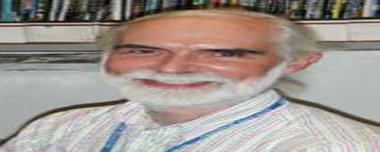
Computational Neuroscience
Computational Neuroscience is an approach to understand brain function by modeling neuronal control spanning from molecular and cellular levels to system levels. By simulating and modeling brain function, computational neuroscientist aim to understand how various neural networks compute information. Research in computational neuroscience has enhanced our understanding of neurological systems with the most prominent example being the Nobel Prize winning work of Hodgkin and Huxley in understanding action potentials. This is an area of strength for our graduate program.
Jennifer Brown
E-MAIL: [email protected]
PhD 2022, JD 2023
PhD Thesis
Alpha-synuclein functions as a sex-specific modulator of cognition and gene
expression.
Current Position:
Attorney at Stinson LLP, Attorneys-at-Law
PhD/JD Program
Undergraduate Institution and Major:
Skidmore College, BA, Neuroscience and Psychology, 2013
George L. Wilcox, Ph.D.
E-MAIL: [email protected]
Research Interests:
Dr. Wilcox and colleagues are engaged in research into the spinal neurotransmission of pain and mechanisms underlying hyperalgesia, analgesia and analgesic tolerance. Studies of both excitatory and inhibitory neurotransmission in the rodent spinal cord apply behavioral, lectrophysiological (both in vivo and in vitro), immunocytochemical and molecular techniques.
Kevin D. Wickman, Ph.D.
Martin Wessendorf, Ph.D.
E-MAIL: [email protected]
Lucy Vulchanova, Ph.D.
Jerrold Vitek, M.D., Ph.D.
E-MAIL: [email protected]
Research Interests:
Understanding the pathophysiological basis for the development of Parkinson's disease and dystonia, exploring the mechanisms underlying the therapeutic effect of DBS, clinical trials examining the effect of DBS for the treatment of neurological and psychiatric disease, and exploring new applications and brain targets for DBS for neurological and psychiatric disorders.
Kamil Ugurbil, Ph.D.
E-MAIL: [email protected]
Mark Thomas, Ph.D.
E-MAIL: [email protected]
Lab web page: http://markthomaslab.com/
Research Interests:
A fundamental question in neuroscience is how the structure and function of the brain is modified by experience.
Stanley A. Thayer, Ph.D.
E-MAIL: [email protected]
Research Interests:
Dr. Thayer's laboratory studies neurodegenerative processes. His group uses electrophysiological and optical techniques to measure ion currents, to image synaptic proteins and to record changes in intracellular calcium within single neurons grown in tissue culture. Current research efforts focus on three principal areas.








